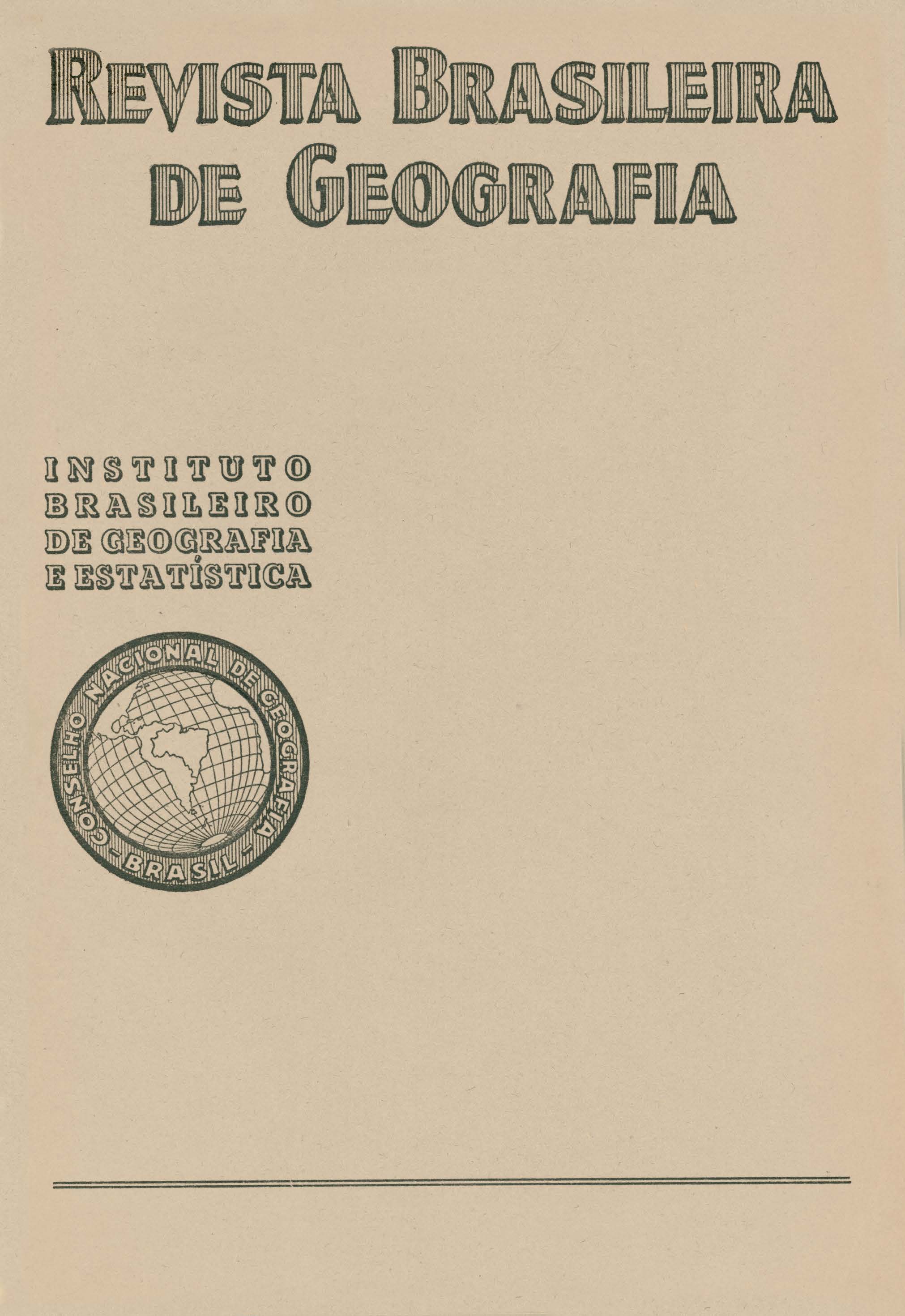Transportes na Amazônia
Resumo
Engineer Moacir SILVA, technical adviser to the National Council of Geography, studies in this article the question of transportation in Amazonia. As that region possesses a vast network of rivers, fluvial navigation holds the preference and ranges from the "montaria (a mount, or small craft so-called because it serves the native as a substitute for the horse) to the "gaiola" or "vaticano" (small and medium-sized river steamers), and even transatlantic liners.
Nowadays hydroplanes may also be counted in this list of means of transportation, incipient though promising.
Owing to the difficulties due to its situation and scanty population, Amazonia has very few railroads and highways.
There are several navigation lines serving this wealthy network of rivers, among which, however, special mention should be made of the SNAPP (Serviços de Navegação da Amazonia e de Administração do Pôrto do Pará). it has 52 units afloat, engaged in cargo and passenger trade among the principal porta of Pará, Amazonas and Acre, and reaching also the republics of Bolivia, Perú and Colombia and the French and Dutch Guianas. We see in an interesting picture a description of these lines, numbering mine, their first, intermediate and final ports of call, and also the sailing dates.
Besides the SNAPP - with a net tonnage of 7 344 tons - other river navigation lines, fiscalized by the Federal Government, are mentioned.
The author goes on to speak about the shipping movement in the Amazonian ports during 1939, and makes a resumé of same by the constituent federated units.
With reference to airways he states that "the airlines of Amazonia may be considered in three connected groups, namely: -Belém· (Sate of Pará) to Manaus (State of Amazonas), thence to Pôrto Velho (on the Madeira River), and the lines to the Acre Territory. These services are executed by the Panair do Brasil S.A., by the Sindicato Condor, now run by the Brazilian Government, and by .the Brazilian Air Post. He furnishes their itineraries and timetables and states that there is connection with the São Paulo-Corumbá line, and contact (in Corumbá ·and Guajará-mirim, joined to Acre) with the Bolivian airlines.
The railroads, whose routes and mileages he describes,. number three: - E. F. de Bragança and E. F. de Tocantins, in the State of Pará, and E. F. Madeira-Mamoré, starting from the Amazon and ending in the North of the State of Mato Grosso, as its name implies.
Its highway system is likewise very short, with a total of 2 345 kilometres. The author submits tables showing the number and kind of vehicles existing in the whole region.
In the first chapter he presents a detailed discrimination of the communications between Amazonia and the centre and South of Brazil, and abroad, and makes reference to the studies, already commenced, of the increased inprovements in said communications.






